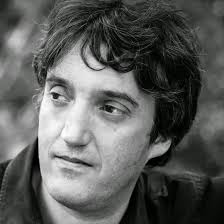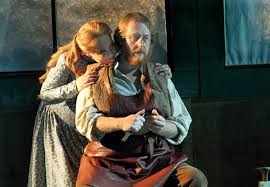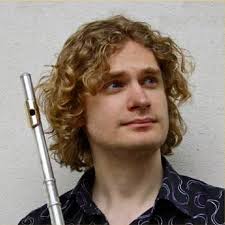Royal Festival Hall 7 February 2015
Rex Lawson(pianola ), Johannes Moser (cello), Denis Hall (presenter)
Q) How is it possible for a pianist who died over 70 years ago to appear “live” in concert?
A) When that pianist was a prolific recorder of piano rolls.
This free matinee concert was presented by the Pianola Institute. Whilst some may take issue with the “live” billing it was an enthralling experience to hear the two Steinway pianos come alive with the playing of such a master composer-pianist. On entering the main auditorium the audience was greeted by the unusual sight of two “pull-up” pianolas in front of the Hall’s two Steinway grand pianos, and a similar “pull-up” reproducing instrument waiting to be substituted for the second half.
The concert showed something of the range of rolls that were produced and the differences between the two main systems of recording and reproduction. To explain this very basically “ordinary” pianolas simply allow the pitch and rhythm of the performance to be played back, with the pianolist expertly controlling dynamics and speed whereas the more sophisticated reproducing piano captures these details on the roll and everything is played back without the need to reinterpret.
We heard solo pieces of both types as well as hearing an accompaniment roll played together with live cello from soloist Johannes Moser in two movements from the Cello Sonata, Op 19. Johannes’ playing was superb but sadly, at times, was a little eclipsed by the sound of the piano. The conclusion to the concert was a rendition of the 2nd movement of Piano Concerto No 2 with Rachmaninoff’s solo played on the reproducing piano and Rex Lawson controlling the pianola with a transcription of the orchestral part. A lot of skill is involved in matching the orchestral part to the solo – it was fascinating to watch the performance.
The programme began with The Isle of the Dead. The length of the piece necessitated the loading of two rolls over two pianolas. Rex moved from one to the another to make for a swifter “join”! There was also lighter music including Polka de W.R. and Rachmaninoff’s concert arrangement of Kreisler’s Liebesfreud.
There were anecdotes, a humorous poem & background information on the various systems of recording and playback. There was some explanation of the way modern MIDI technology has been utilised to enable rolls to be transcribed from one commercial and incompatible system and played back on another. I would have liked slightly more explanation as to how the reproducing piano had been adapted to be played back in a less conventional way. The enthusiasm and expertise of the two presenters was evident throughout.
This was a very good introduction to the world of pianolas and reproducing pianos but also an entertaining and immersive musical experience in its own right. Congratulation to all involved. I hope it will have helped to raise the profile of this musical genre and that there may be similar future events. SP



